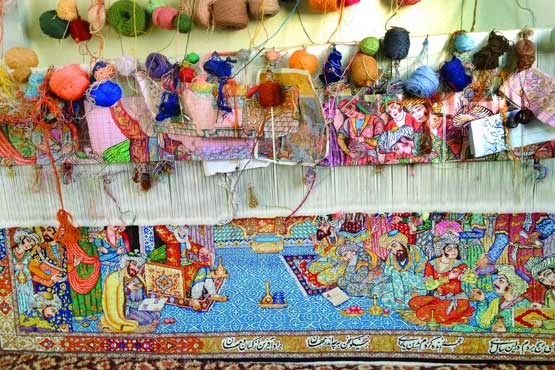What is the Difference Between a Persian Rug and a Persian Carpet?
Persian rugs and Persian carpets are renowned for their exquisite beauty, intricate designs, and exceptional craftsmanship. While these terms are often used interchangeably, there are subtle differences that set them apart. Understanding these differences between Persian rug and Persian carpet distinctions can help you appreciate the unique qualities of each.
Handwoven Artistry
Both Persian rugs and Persian carpets are handwoven or hand-knotted, showcasing the meticulous skill of Iranian weavers. This artisanal process involves tying individual strands of wool or silk onto the rug’s foundation by hand, creating intricate patterns and designs. This painstaking technique ensures that each piece is unique and of the highest quality. The craftsmanship involved in making these rugs and carpets is a significant factor contributing to their value and desirability.
Differences in Size
One of the primary differences between a Persian rug and a Persian carpet is their size. Traditionally, the term “rug” is used to describe smaller pieces, while “carpet” refers to larger ones. Rugs are typically used as decorative pieces, often placed in smaller spaces like entryways, kitchens, or bathrooms. In contrast, carpets cover larger areas and are commonly found in living rooms, dining rooms, or large hallways. Despite this distinction, the terms “Oriental rug” and “Oriental carpet” are often used interchangeably, adding to the confusion.
Types of Weaving: Kilim and Knotted Pile
Persian rugs and carpets can be either flat-woven or have a knotted pile. Kilims are a type of flat-woven rug that lacks the raised pile typical of knotted rugs. They are created by interweaving the warp and weft strands, resulting in a smooth, durable fabric. Kilims often feature geometric patterns and vibrant colours, making them popular for both floor coverings and wall hangings.
Knotted pile rugs, on the other hand, have a dense, plush surface created by tying knots of wool or silk onto the warp threads. These knots form intricate patterns and designs that are highly detailed and often include floral motifs, medallions, and borders. The density of the knots, known as the knot count, is a key factor in determining the quality and price of the rug or carpet.
Cultural and Historical Significance
Both Persian rugs and carpets hold significant cultural and historical value. They have been an integral part of Iranian culture for centuries, symbolising wealth, status, and artistic achievement. Historically, these pieces adorned the floors of palaces and the homes of the elite. Today, they continue to be highly sought after by collectors and interior designers worldwide for their timeless beauty and elegance.
Investing in Persian Rugs and Carpets
Investing in a Persian rug or carpet means acquiring a piece of art that can appreciate in value over time. Their durability, combined with their intricate designs and high-quality materials, ensures they can be passed down through generations. Whether you choose a smaller Persian rug or a larger Persian carpet, you are investing in a legacy of craftsmanship and cultural heritage.
In summary, while Persian rugs and Persian carpets are often used interchangeably, the primary difference lies in their size and weaving technique. Both types are handwoven masterpieces that showcase the rich cultural heritage and exceptional craftsmanship of Iranian weavers. Their intricate designs, high-quality materials, and historical significance make them valuable investments that bring timeless beauty and elegance to any space.

